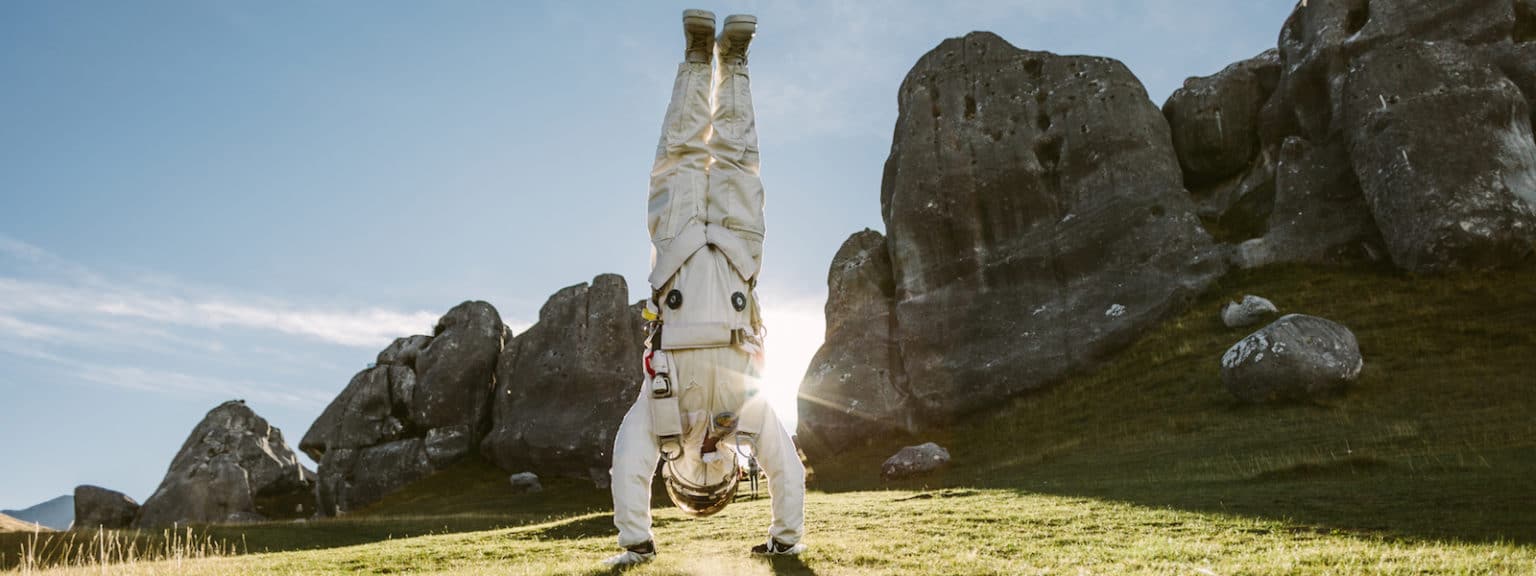If you feel like you’re constantly playing catch-up, WRIXON can give you the confidence that comes from knowing your critical communications are taken care of.
Digital Agency Show listeners—ready to get BRAVER?

Hello my new friends,
Hey, it’s Aaron Wrixon. Thanks for listening to Brent Weaver and me on the Digital Agency Show.
If you’re trying to learn more about the BRAVER™ content framework I mentioned, you’re in the right place.
Why get BRAVER?
Calling today’s Web “noisy” is like calling Taylor Swift popular. Technically true—and at the same time a massive understatement.
You can’t get ahead with content anymore unless it stands out. What was once a differentiator is now just another commodity.
But what makes some content rise above the rest?
Well, you know how they say, “There’s no accounting for taste?”
It’s like that—there’s no easy way to tell what content is going to succeed.
If I could predict what would go viral, for example, I’d be laughing at you from a throne on Wrixon Island.
But I can tell you what keeps your stuff from succeeding.
If your content is timid, you’re simply not going to win with content marketing. To stand out, you need to stand up.
If you’re not nervous when you’re hitting publish, then you’re doing it wrong.
In other words, in a world of “safe and same,” you need to get BRAVER.
How to be BRAVER
BRAVER is an acronym we developed that stands for:
- Bold
- Relevant
- Authoritative
- Vulnerable
- Engaging
- Remarkable
Do your best to create content that is these six things—and you can’t help but stand out from the crowd.

B is for bold
Boldness is attention-getting. (Don’t believe me? Talk to a peacock.)
To get bolder with your content, ask yourself these questions:
- Am I worried about making waves, or am I expressing MY opinion?
- Is fear holding me back?
- Does my content stand for something, or does it say nothing?
- Am I taking any risks here? If not—why not?
Just one example: I love this rant about useless home pages.
R is for relevant
Relevance makes your reader feel like they belong to a club you’re leading—and it makes them want to stay loyal to you over time. Keep being relevant and you’ll have fans for life.
Ask these questions to gauge your relevance.
- Am I writing for my target audience—or just for me?
- Have I considered my reader’s intent? e.g., Where are they in the sales cycle, and is this content matched to that place?
- Have I thought about where, when, why and how he or she is reading? In other words, am I thinking about the context in which they’re reading?
- Are you telling them something they need right now?
- Are you offering advice they might need in the future?
- Is the knowledge you’re sharing important to them in their overall life?
- What problem am I solving with this piece? Does it address the intersection of everything above—target audience, intent, and context?
Just one example: As of Sep 5, 2017, when this page was published, this gallery of Hurricane Harvey photos was Buzzsumo’s second-most shared content of the previous 12 months. Harvey had made landfall only 10 days earlier.

A is for Authoritative
There’s no doubt about it: authority makes it easier for you to sell. Which, after all, is why you’re publishing content in the first place, right? (For details of an interesting—and chilling—psychological experiment, read the section on authority in Robert Cialdini’s Influence.)
Here are some questions to ask around authority:
- Have I done my research—and demonstrated that I have?
- Am I revealing any insights here? Is this thought-leader stuff or am I just parroting someone else?
- Have I got examples, references to experience, stats and data to share? (Because these go along way to proving your authority.)
- If I don’t have much of my own, can I piggy-back on the authority of others?
Just one example: This blog post on copywriting formulas boasts a one-hour (!!!) reading time and hits all the authority buttons. It’s deeply researched, has tons of examples, and takes advantage of lots of borrowed expertise.
V is for Vulnerable
Vulnerability creates a feeling in your reader that’s very important—the sense that they and you are sharing on an intimate, spiritual level. Communion is the official word, but essentially I’m talking about what happens when your reader thinks, “Wow, they’re really putting it out there—and they’re just like me.”
Questions to ask to see if you’re being vulnerable enough with your content:
- Am I being honest or trying to pretend?
- Do I feel something—and is that feeling showing through?
- If I removed my name, would people know it was me?
- Am I speaking my truth, even if that truth is uncomfortable?
Just one example: I talked on the podcast about a husband and wife battling a tragedy.
E is for Engaging
You can grab attention by being bold, but you keep it by being engaging.
Here are some engagement questions to ask:
- Is my content interesting? (You’d be surprised how much isn’t.)
- Is it valuable?
- Is it easy to understand and easy to use?
- Is it technically sound? (e.g., Formatted correctly, or recorded clearly and without distortion, etc.)
Just one example: I probably wasted 15 minutes spinning “records” in this astounding Google Doodle celebrating the birth of hip-hop.

R is for Remarkable
Finally, you could argue that it’s the combination of the five previous factors that make something remarkable, but I want to list it on its own. (And not just because it finishes our acronym.)
When something is worthy of attention, you make remarks about it. You literally re-mark it: you notice it again.
Something that’s remarkable is, by its nature, distinctive—and that’s something everybody can get behind.
Ask these questions to test whether you’re creating remarkable content:
- Would anyone want to share this?
- Am I saying or doing anything truly different here?
- It’s probably not right for everyone… But is it right for someone? (e.g., Does it actively exclude the people it’s not for?)
- If this was the ONLY piece of content I had—would I be OK with that?
Just one example: Quick—what’s the greatest piece of content marketing ever… And one of the most remarkable marketing stories of the past decade? The LEGO movie.
Where to from here? Get BRAVER!
We’re in the early stages of building a course on how to create BRAVER content—both for you and for your clients.
Is that something you’d like to hear more about? Drop me a line.